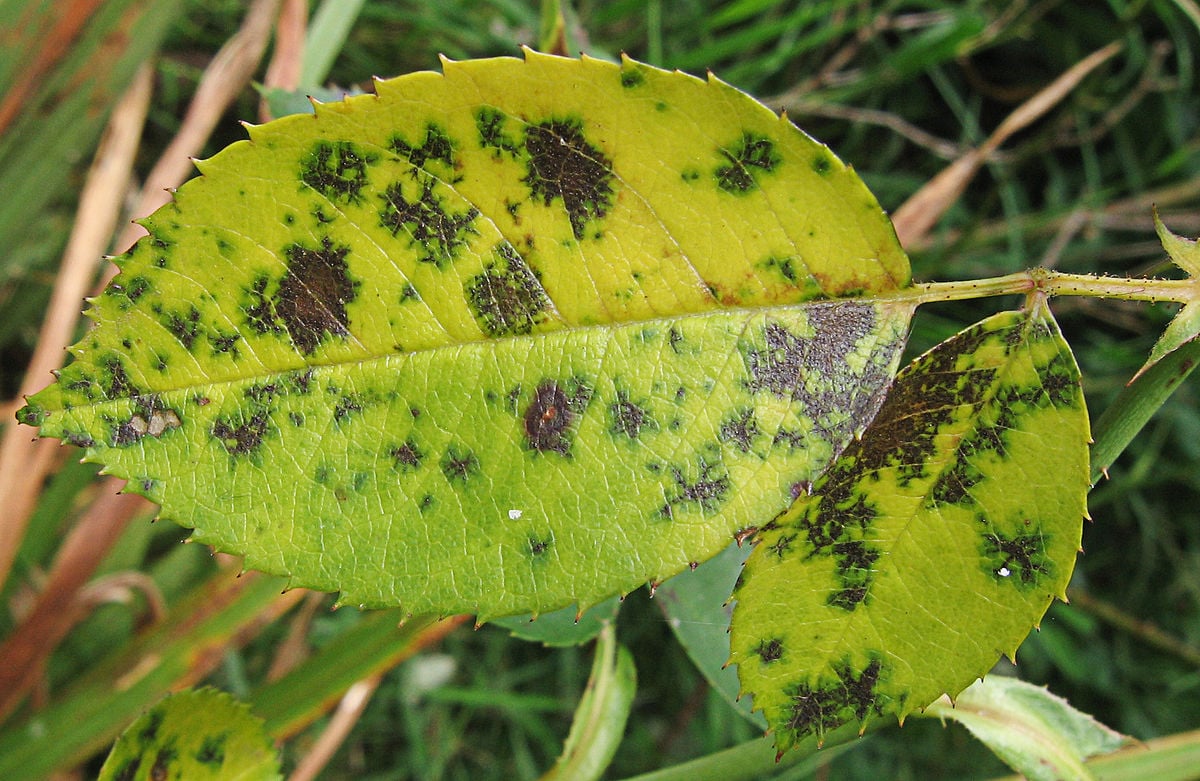Table of Contents
Rose plants are a joy to look at. Roses are synonymous with beauty and are one of the most popular flowers in the world. But growing healthy rose bushes is a task that takes much effort. They require exact growing conditions and daily care for the flowers to bloom. And with such, diseases like black spots often stunt their growth.
Black spots are fungal diseases called Diplocarpon rosae and they can weaken a plant to a big extent. Not usinga homemade remedy for black spots on roses leaves an unsightly blemish on the leaves. And, if your leaves get yellow and drop off during humid weather conditions, you have your culprit. In this article, we expand on how this black spot fungus works, especially how it spreads.
Understanding the Rose Black Spot Fungus
Black spots on rose leaves usually appear from the lower branches as they move their way up. This, in turn, makes it capable of defoliating an entire plant if it remains unchecked. As the leaves drop off, the young canes are also affected, and in extreme cases, even the flowers get red spots. Overall, black spots fungal disease weakens the plant gradually and stops flower production altogether in the ultimate stage.
Causes and Symptoms
The cause of the black spots you see on your rose leaves is a fungal infection. The fungus travels through the air, especially when it’s humid, and attaches itself to the leaves. It remains dormant during the cold and winter and comes through the new foliage in spring. Those rain showers may look fun come springtime, but with them comes the water splashings that distribute spores.
The symptoms of black spot fungus on rose leaves can vary a lot. The appearance depends on the strain of fungus, as well as the species and cultivar of the rose. But overall, there would be a large and growing black-purplish spot on the upper side of the leaves. The boundary would not be solid but diffused. Sometimes, the radiating strands are also visible.
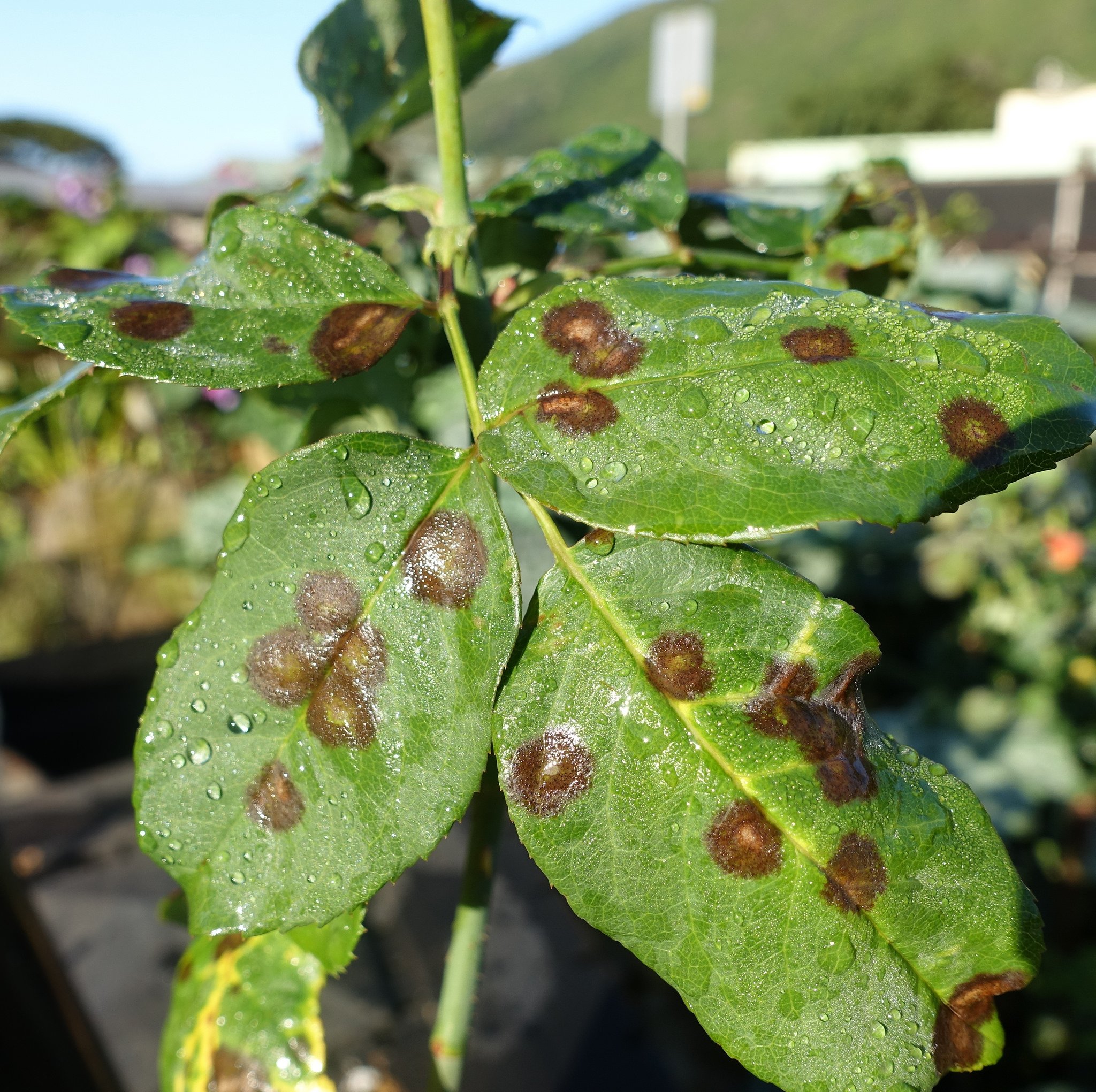
It is often easy to miss a few spots when you have a large garden. But these spots also turn the leaves yellow. And even if the other parts of the plant remain unaffected, the diseased leaves would drop.
For some plants, the leaves will not turn, neither will they drop, but the spots will be there. The worst symptom of the black spot fungal infection would be the scaly lesions around the stems. However, severe symptoms like these only occur when the disease is left untreated.
How the Disease Spreads
The worst thing about the black spots on rose leaves is how they spread. The disease breeds in moisture and can be carried to other plants through air. So, if you have a simple leaf with one black spot, you can be sure that within days, your garden will be covered. The propagation of the fungus occurs from leaf to leaf and plant to plant by wind.
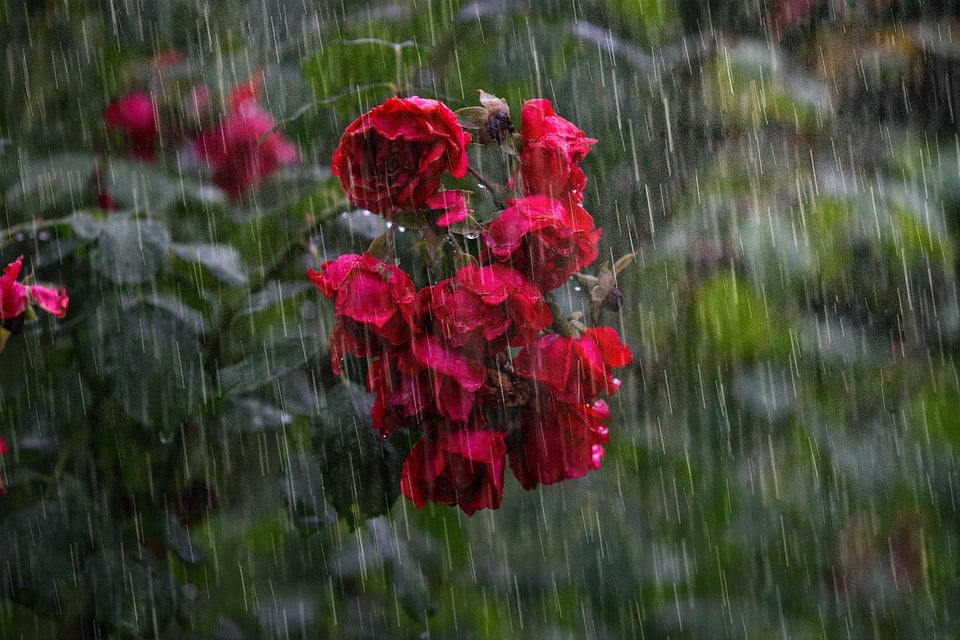
As the fungus needs moisture to germinate, wet weather is sure to set it off. A typical summer rainshower would cause them to spring forth in the new foliage. It also thrives when the weather continues to be wet and humid. However, if the summer is hot, especially the months of July and August, the spread of the spores is limited.
Lifecycle of The Fungus
First, remember that the fungus is present in the dead and dropping leaving. The leaves that have already been affected by the spots are beyond saving. And they also carry the fungus which overwinters in them. Once the temperature rises a little, the fungal spores germinate from the dead leaves and get disseminated by water.
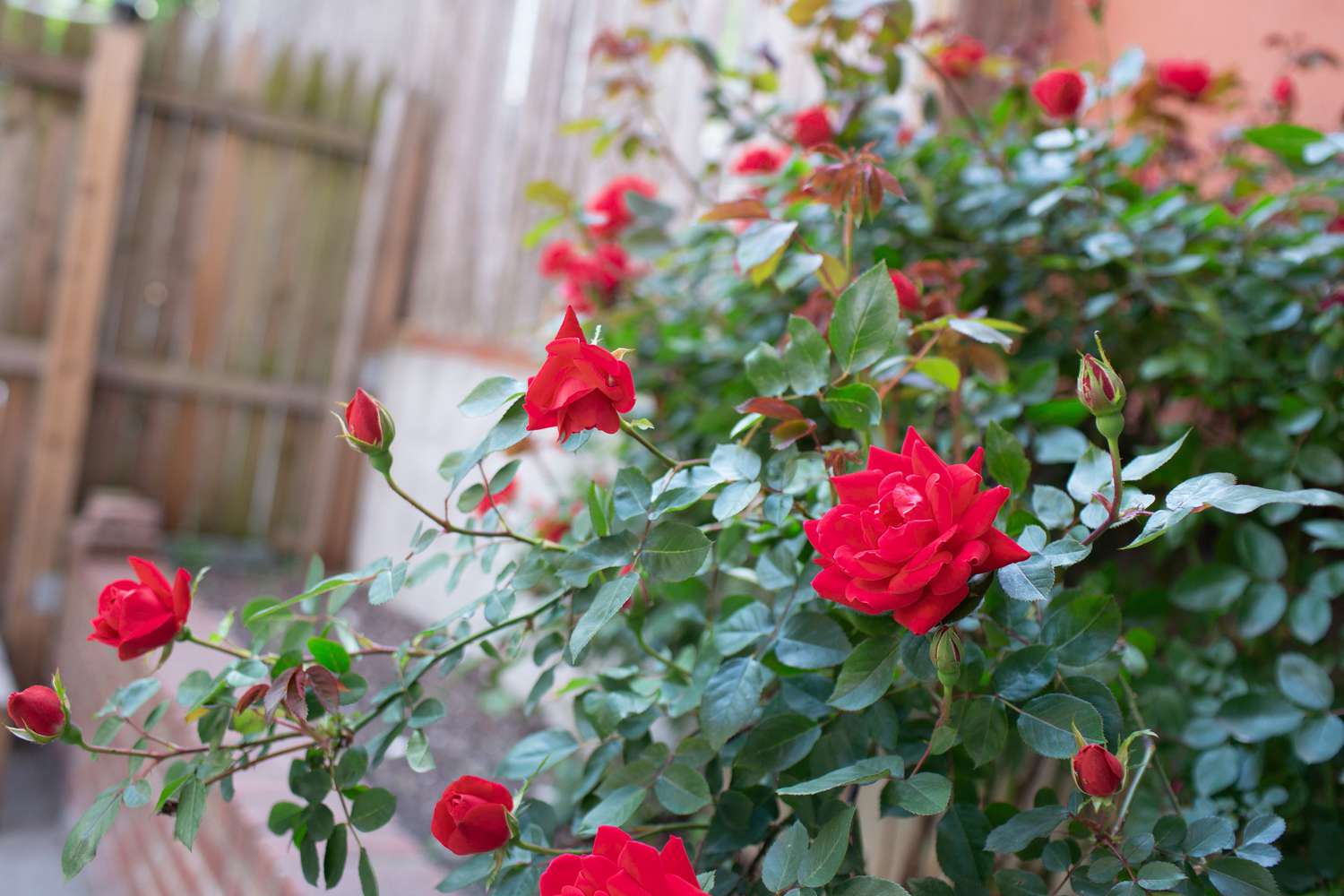
For the infection to regain its full stature, the spores must be left on the surface of new leaves under humid conditions. Only after seven continuous hours of rain would the spores develop fruiting bodies and lesions. This leison will, in turn, produce new spores to be carried to new leaves.
Measures to Counteract Black Spots
There are many ways to take good care of your rose plants so they do not get any new black spots. A healthy plant growing to its full capability is not susceptible to diseases like these. So, you have to make sure that the conditions for growing roses are ideal.
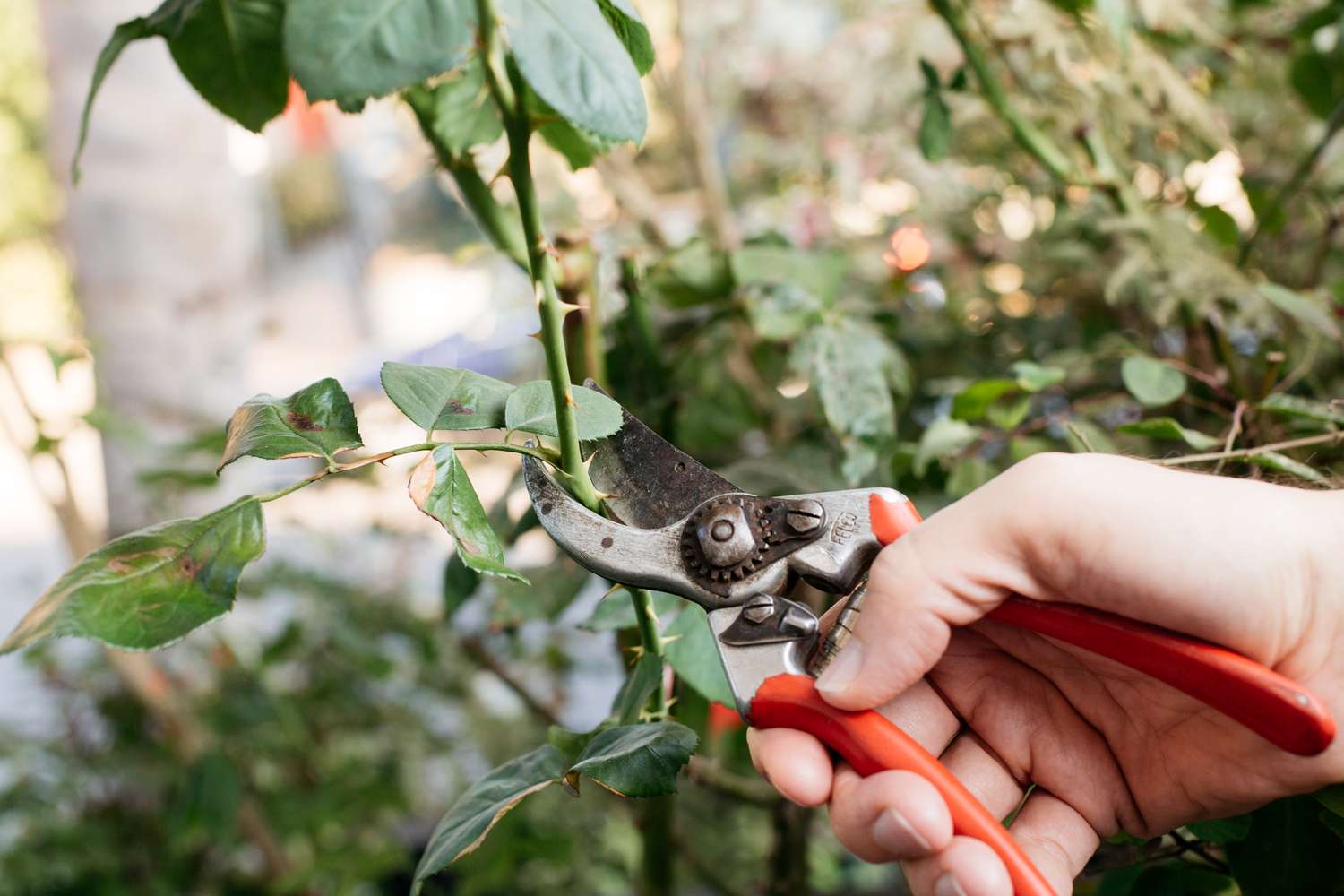
A sunny location is a must, so place your plants in full-drained soil in a region where they can absorb the morning sun. Also, make sure that the moisture can be fully dried out from the leaves. Pruning the diseased leaves is necessary, as it also increases airflow. While watering, concentrate on the roots, not the overhead.
Wrapping Up!
Black spots on rose leaves can make a plant look unsightly. But they have a lot more serious effects than that. These spots are fungal infections that severely weaken the plant and make them drop leaves. The symptoms are very physical, but affected leaves can never be helped.
So it is better to understand how they propagate and prevent the leaves from getting the infection. As the spores travel through air and water from splashing during rain, a dry plant is sure to be safe.
If you have any other queries about black spots, let us know in the comments below!

